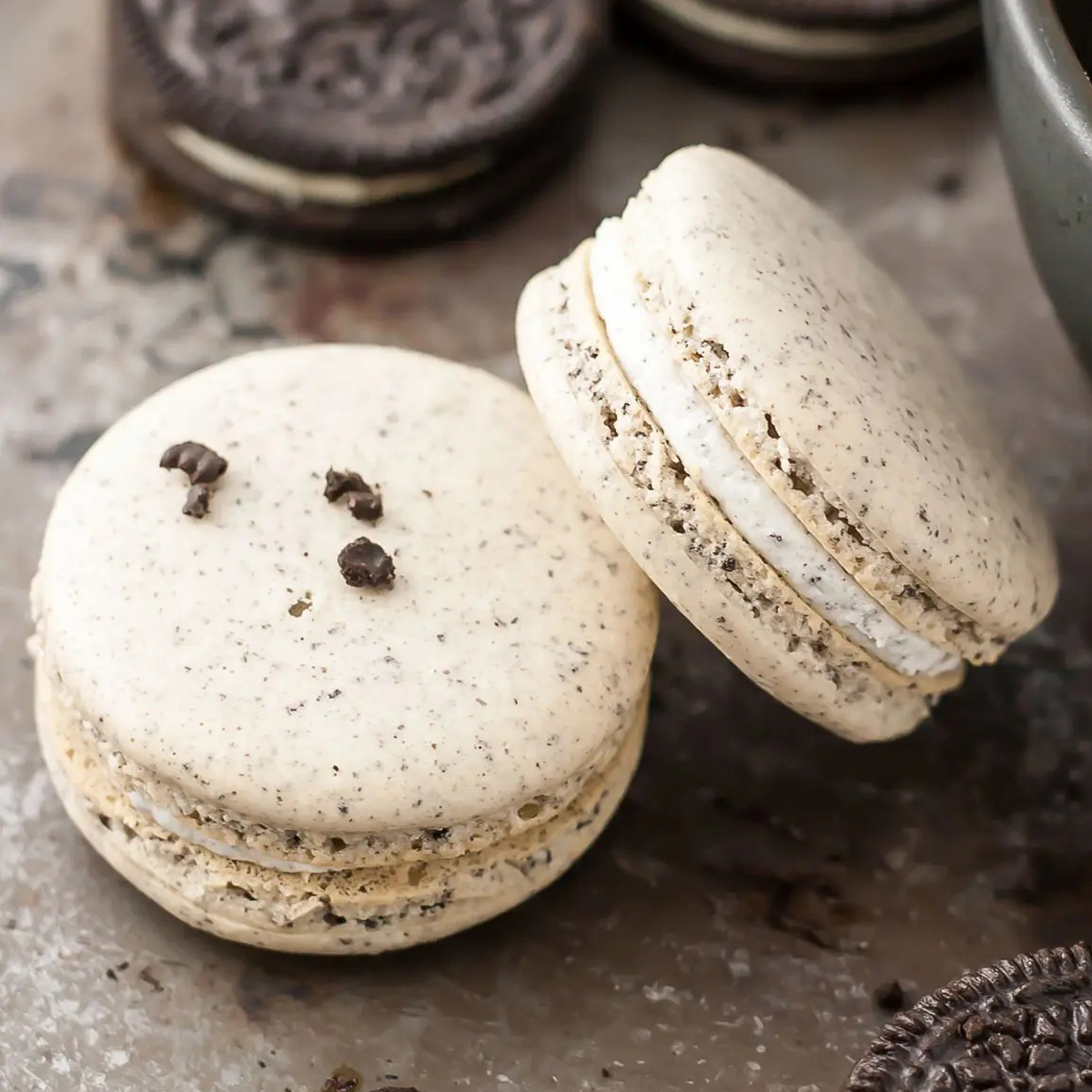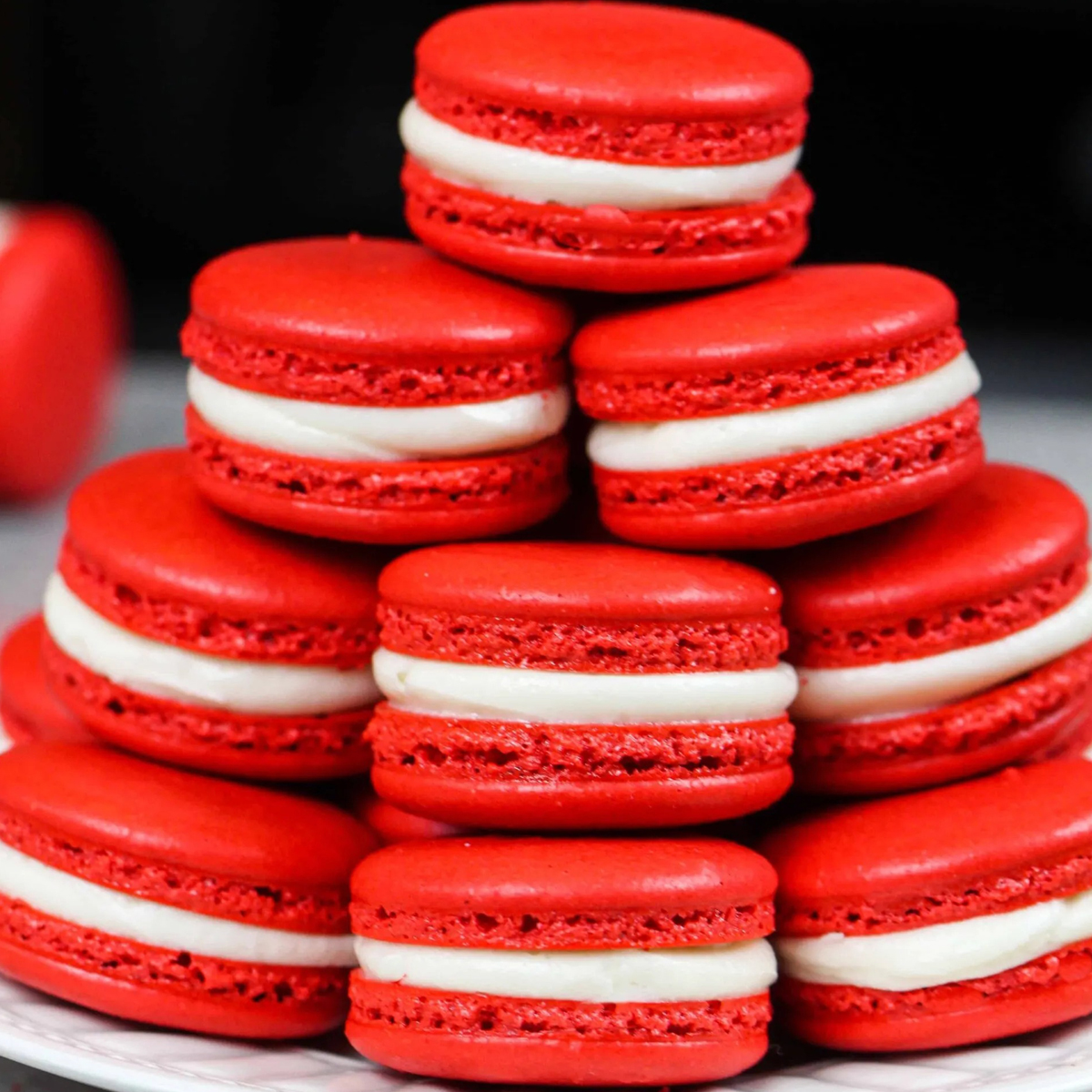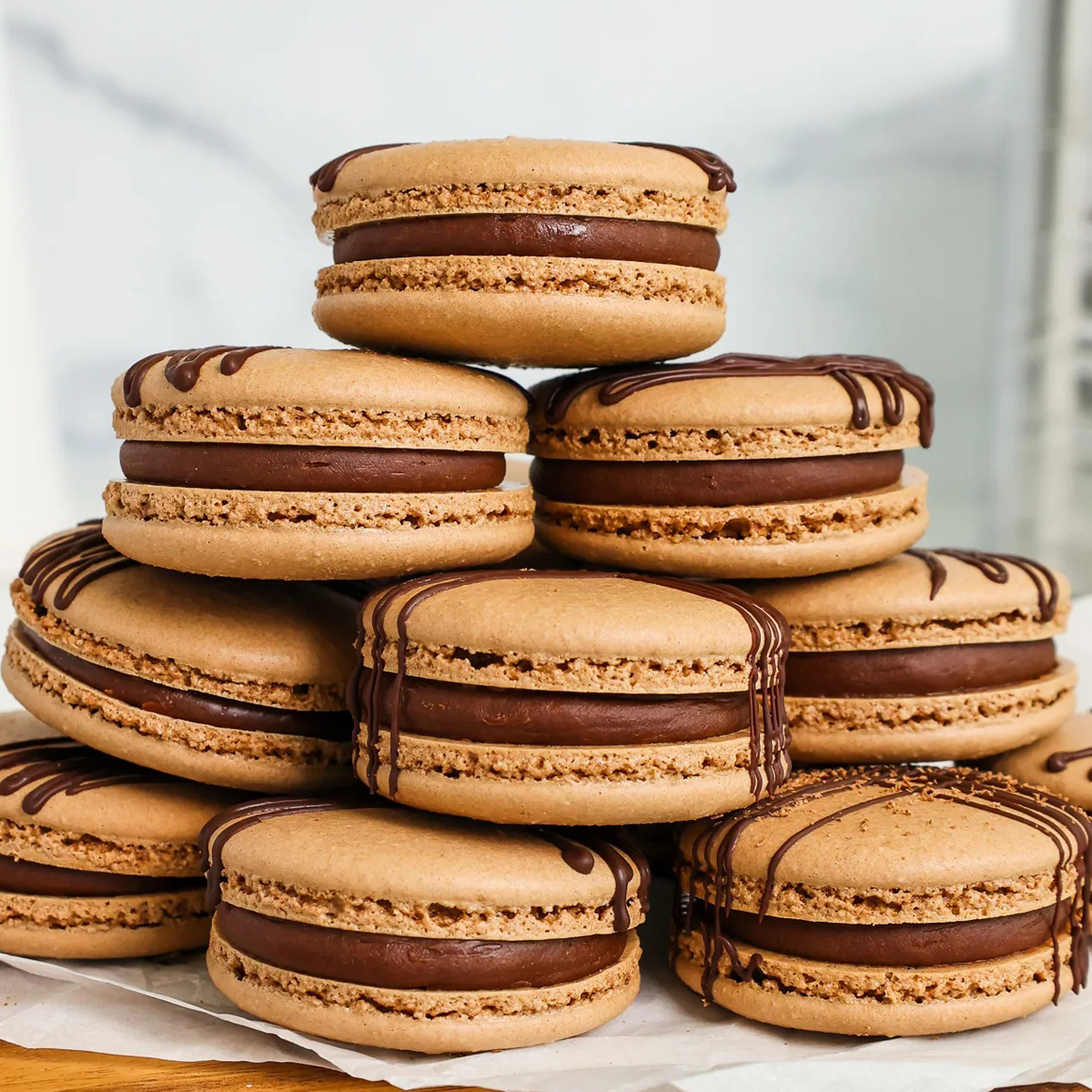Welcome to the delectable world of French Macarons! These exquisite treats are an epitome of elegance and sophistication, capturing the hearts and taste buds of pastry enthusiasts around the globe. With their delicate meringue shells, smooth ganache or buttercream fillings, and an array of captivating colors, French Macarons are a delightful fusion of texture, flavor, and visual appeal. Originating in France, these petite, almond-based confections have become a symbol of artistry in the realm of pastry-making. Join us as we delve into the fascinating history, delightful flavors, and intricate techniques that make French Macarons a cherished delicacy cherished by many.
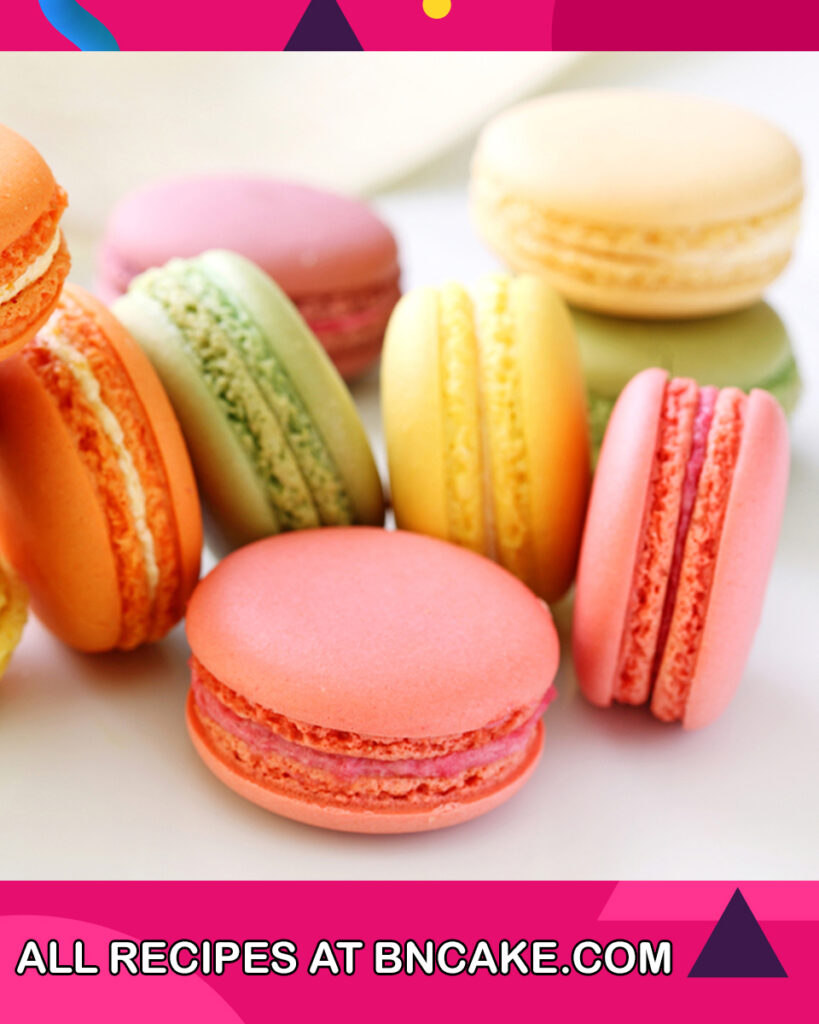
What Is French Macaron?
A French Macaron is a delicate and colorful confection made from almond flour, egg whites, and a mixture of granulated and powdered sugar. This delightful treat is renowned for its smooth, crisp outer shell that encases a soft, slightly chewy interior. It is often filled with various flavorful fillings, such as ganache, buttercream, fruit preserves, or other sweet fillings.
The process of creating French Macarons requires precision and skill, as achieving the perfect texture and appearance can be quite challenging. The almond flour and sugar are carefully mixed into a meringue made from whipped egg whites, creating a smooth batter known as the macaronage. This mixture is then piped onto baking sheets in small, uniform circles and left to rest briefly, forming a smooth outer skin before baking.
The origins of the French Macaron can be traced back to the 16th century in Italy, but it wasn’t until the 19th century that the recipe was brought to France and refined into the iconic treat we know today. French Macarons gained international fame and popularity, becoming a symbol of French pastry expertise.
One of the distinctive features of French Macarons is the wide range of flavors and colors they come in, from classic favorites like vanilla, chocolate, and raspberry to more exotic options like lavender, matcha, or salted caramel. Their dainty appearance and delightful taste make them a popular choice for special occasions, gifts, or simply as a luxurious indulgence.
In conclusion, French Macarons are a delightful fusion of texture, taste, and artistry, cherished for their unique appearance and delectable flavors, and celebrated as a true French culinary treasure.

Why You Will Love French Macaron Recipe?
- Exquisite Taste: French Macarons offer a harmonious blend of textures and flavors. The delicate, crispy shell contrasts perfectly with the soft, chewy interior, while the wide range of fillings provides a burst of delicious taste with each bite.
- Versatility: The recipe’s versatility allows you to experiment with an array of flavors and fillings. Whether you have a penchant for classic combinations or adventurous taste buds craving unique pairings, French Macarons can cater to your preferences.
- Elegant Presentation: French Macarons are not just a treat for the taste buds; they are visually stunning as well. With their vibrant colors and uniform shapes, they make for an elegant addition to any dessert table or gift box.
- Challenging and Rewarding: Mastering the art of making French Macarons can be a challenging endeavor, but the sense of accomplishment when you achieve the perfect batch is incredibly rewarding. It’s a pastry that encourages you to improve your skills and attention to detail.
- Celebratory Delight: French Macarons are associated with celebrations, high tea, and special occasions. Serving or gifting these delicate treats conveys a sense of thoughtfulness and indulgence, making them ideal for sharing joy with loved ones.
- Gluten-Free Option: As French Macarons primarily use almond flour instead of wheat flour, they are naturally gluten-free, making them a delightful option for those with gluten sensitivities or celiac disease.
- Cultural Heritage: French Macarons have a rich history and cultural significance tied to France. By indulging in this treat, you also connect with a centuries-old culinary tradition.
- Impress Guests: Serving homemade French Macarons at gatherings or events will undoubtedly impress your guests. They might seem like a professional patisserie creation, but you can make them right in your own kitchen!
- Joy of Baking: Baking French Macarons can be a fun and creative experience. From trying out different colors to developing your unique filling combinations, it’s a delightful journey of exploration in the world of baking.
- Gifts and Favors: French Macarons make wonderful gifts or party favors for weddings, birthdays, or any other special event. Their charming appearance and delectable taste will leave a lasting impression on recipients.
In summary, the French Macaron recipe offers not only a delightful treat to your taste buds but also an opportunity to embrace the art of baking and create cherished moments of joy and celebration. With their exquisite taste, elegance, and versatility, it’s no wonder why French Macarons have captured the hearts of dessert lovers worldwide.
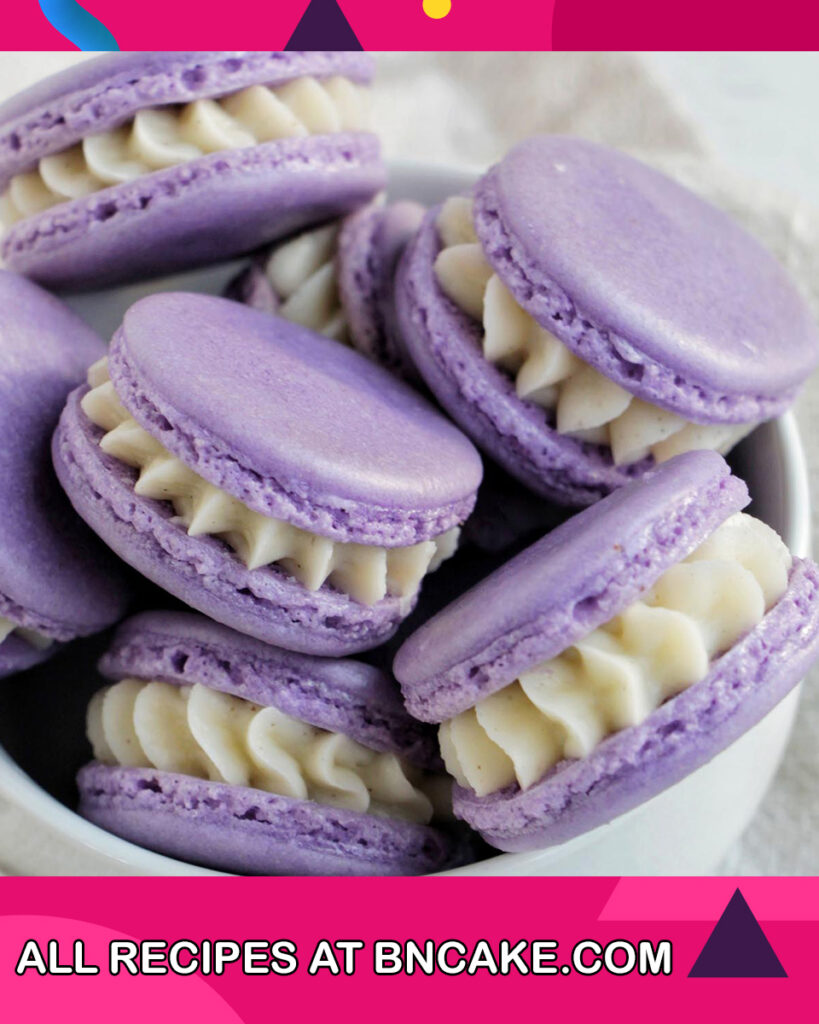
Ingredients For French Macaron
- 200g almond flour (finely ground)
- 200g powdered sugar (also known as confectioners’ sugar)
- 150g granulated sugar
- 150g egg whites (aged, preferably at room temperature for about 24 hours)
- 1/4 teaspoon cream of tartar (optional, helps stabilize the egg whites)
- Food coloring (gel or powdered form, optional, for coloring the macarons)
- Flavored extracts (e.g., vanilla, almond, or any other flavor of your choice, optional)
- Pinch of salt (to enhance the flavor)
How To Make French Macaron
Step 1: Prepare the Ingredients
- Measure out all the ingredients precisely using a kitchen scale for accurate results.
- Ensure the almond flour is finely ground to achieve a smooth macaron shell texture.
- Sift the almond flour and powdered sugar together into a large mixing bowl to remove any lumps and ensure even mixing.
Step 2: Whip the Egg Whites
- In a separate clean and dry mixing bowl, add the aged egg whites (left at room temperature for about 24 hours).
- Beat the egg whites on medium speed using an electric mixer until they become foamy.
Step 3: Add Cream of Tartar
- If using, add the cream of tartar to the egg whites to help stabilize them during whipping.
Step 4: Beat the Egg Whites
- Increase the mixer speed to medium-high and continue beating until soft peaks form. Soft peaks are reached when the egg whites hold their shape but slightly curl at the tips.
Step 5: Add Granulated Sugar
- Gradually add the granulated sugar to the whipped egg whites while still beating.
- Continue beating until stiff peaks form. Stiff peaks are achieved when the egg whites hold their shape firmly and do not collapse.
Step 6: Add Color and Flavor (Optional)
- If desired, add a few drops of food coloring or powdered food coloring to the meringue. For flavored macarons, add the desired amount of flavored extract at this stage.
Step 7: Macaronage
- Gently fold the sifted almond flour and powdered sugar mixture into the whipped egg whites. This process is called macaronage.
- Use a silicone spatula to fold the dry ingredients into the meringue, making sure to incorporate them thoroughly. Be gentle to maintain the airiness of the meringue, but ensure there are no dry pockets of flour left.
Step 8: Pipe the Macarons
- Transfer the macaron batter into a piping bag fitted with a round tip. You can also use a ziplock bag and cut a small hole in one corner if you don’t have a piping bag.
- Pipe small circles (approximately 1.5 inches in diameter) onto baking sheets lined with parchment paper or silicone baking mats. Leave some space between each circle to allow the macarons to spread slightly.
Step 9: Rest the Macarons
- Tap the baking sheets gently on the counter to release any air bubbles.
- Let the piped macarons rest at room temperature for about 30 minutes to 1 hour. This resting time allows the macarons to develop a smooth outer skin, which helps in achieving the characteristic “feet” during baking.
Step 10: Preheat the Oven
- Meanwhile, preheat your oven to 150°C (300°F). The exact temperature may vary depending on your oven, so adjust accordingly.
Step 11: Bake the Macarons
- Place the rested macarons in the preheated oven and bake for approximately 15-18 minutes.
- Check for doneness by gently touching the top of a macaron shell. It should be firm and not wobble. If they are still sticky, continue baking for a few more minutes.
Step 12: Cool and Fill
- Remove the macarons from the oven and let them cool completely on the baking sheets.
- Once cooled, carefully remove the macarons from the parchment paper or silicone baking mats.
- Match macaron shells of similar size and fill the center of one shell with your desired filling (ganache, buttercream, fruit preserves, etc.), then sandwich it with another shell.
Step 13: Optional Maturity
- For the best flavor and texture, you can store the filled macarons in an airtight container in the refrigerator for 24-48 hours before serving. This allows the flavors to meld together and the texture to become even more delightful.
Enjoy your homemade French Macarons! They are sure to impress with their exquisite taste and elegant appearance.
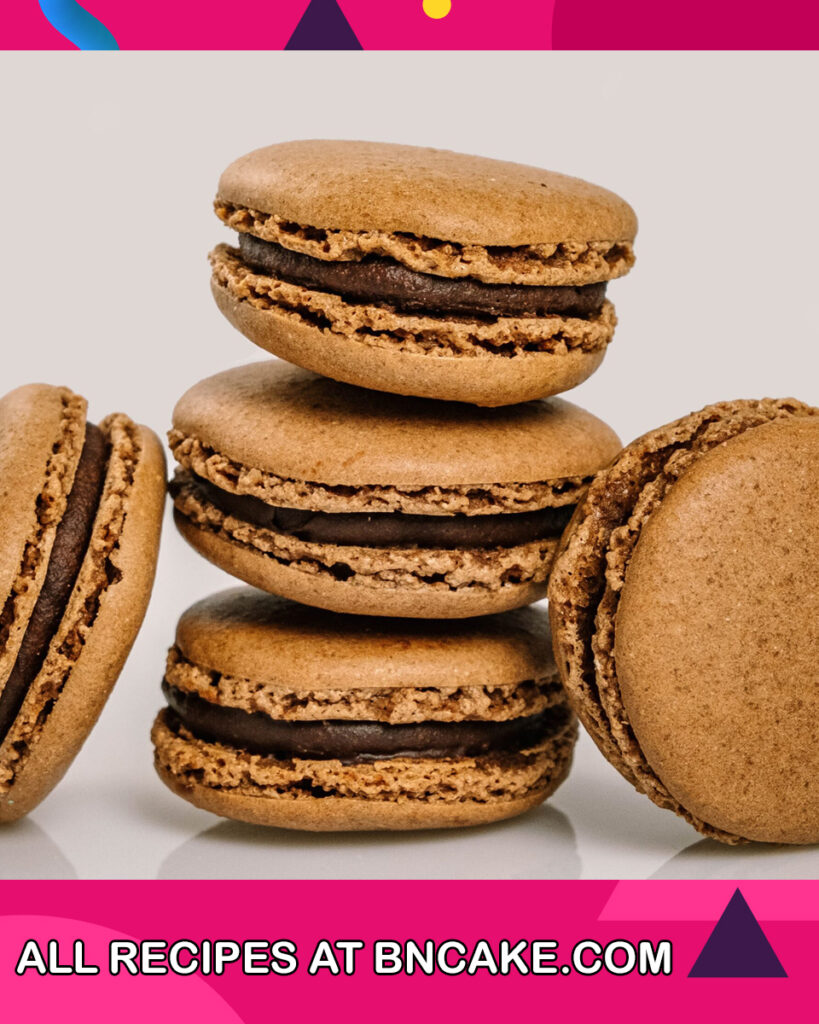
How To Serve French Macaron
Serving French Macarons is an art in itself, as their delicate and colorful appearance adds a touch of elegance to any occasion. Here’s how to serve French Macarons to make the most of their delectable charm:
- Presentation: Arrange the macarons on a beautiful serving platter or a tiered dessert stand. Consider using pastel-colored plates or decorative trays to complement the macarons’ vibrant hues and create an appealing display.
- Variety: Offer a variety of flavors to cater to different preferences. You can organize the macarons into sections based on flavors, allowing guests to pick their favorites. This adds an element of excitement and encourages guests to try different combinations.
- Pairings: Consider offering some complimentary accompaniments, such as a selection of hot beverages like coffee, tea, or even champagne for a touch of luxury. The pairing of macarons with drinks enhances the overall tasting experience.
- Temperature: French Macarons are best enjoyed at room temperature. Take them out of the refrigerator about 30 minutes before serving to allow the filling to soften slightly and the flavors to fully develop.
- Visual Appeal: Pay attention to the visual presentation by ensuring that the macarons are uniformly shaped and that the colors are vibrant and attractive. Aesthetics play a crucial role in enhancing the overall appeal of the dessert.
- Napkins or Small Plates: Provide small napkins or plates for guests to place their macarons on while they enjoy them. This prevents any crumbs or fillings from making a mess.
- Tasting Notes: If you’re serving a wide variety of macaron flavors, consider providing small cards or labels with the names of the flavors. This way, guests can identify and savor each flavor without confusion.
- Custom Packaging: If you’re gifting French Macarons to someone special, consider packaging them in a beautiful box or a decorative container. This adds a personal touch and makes the gift even more special.
- Sharing Moments: Encourage guests to share their favorite flavors and experiences while indulging in the macarons. Such sharing adds to the joy and enjoyment of the dessert.
- Keep it Light: French Macarons are delicate treats, so avoid piling heavy objects on top of them or placing them in crowded containers that could damage their delicate shells.
Remember, French Macarons are not just desserts; they are also a symbol of elegance and refinement. By paying attention to the presentation and details, you can create a delightful experience for your guests and make any occasion more memorable with these charming treats.

How To Store French Macaron
Storing French Macarons properly is essential to maintain their freshness, texture, and flavor. Here’s how to store French Macarons to ensure they stay delightful for as long as possible:
- Refrigeration: Once you have filled the macarons, store them in an airtight container in the refrigerator. The cool temperature will help preserve their fillings and keep them fresh.
- Layering: If you need to stack the macarons in the container, place a piece of parchment paper or wax paper between each layer to prevent them from sticking together or damaging each other.
- Separate Strong Flavors: If you have macarons with strong flavors, such as coffee or mint, consider storing them in a separate container from the more delicate or lighter-flavored macarons. This prevents the strong flavors from transferring and potentially overwhelming the others.
- Avoid Moisture: Moisture is the enemy of macarons, as it can cause them to become soft and lose their crispiness. Make sure your container is airtight and keep them away from humidity-prone areas in the refrigerator.
- Consume Within a Few Days: French Macarons are at their best within the first few days after filling. For the ultimate freshness and texture, try to consume them within 3-4 days of making and filling.
- Room Temperature Before Serving: Before serving, take the macarons out of the refrigerator and let them sit at room temperature for about 30 minutes. This allows the filling to soften slightly, and the flavors will be more pronounced.
- Freezing (Optional): If you have a surplus of macarons or want to store them for a more extended period, you can freeze them. To freeze, place the filled macarons in an airtight container and separate the layers with parchment paper. Freeze for up to 1-2 months. Thaw them in the refrigerator before bringing them to room temperature.
- Avoid Direct Sunlight: When storing macarons at room temperature, keep them away from direct sunlight and heat sources. Exposure to sunlight can cause the colors to fade and affect the taste and texture.
Remember, French Macarons are delicate treats, and proper storage is key to preserving their delightful qualities. Whether you choose to refrigerate or freeze them, ensuring an airtight environment is crucial to keeping them fresh and ready to be enjoyed whenever the mood strikes.
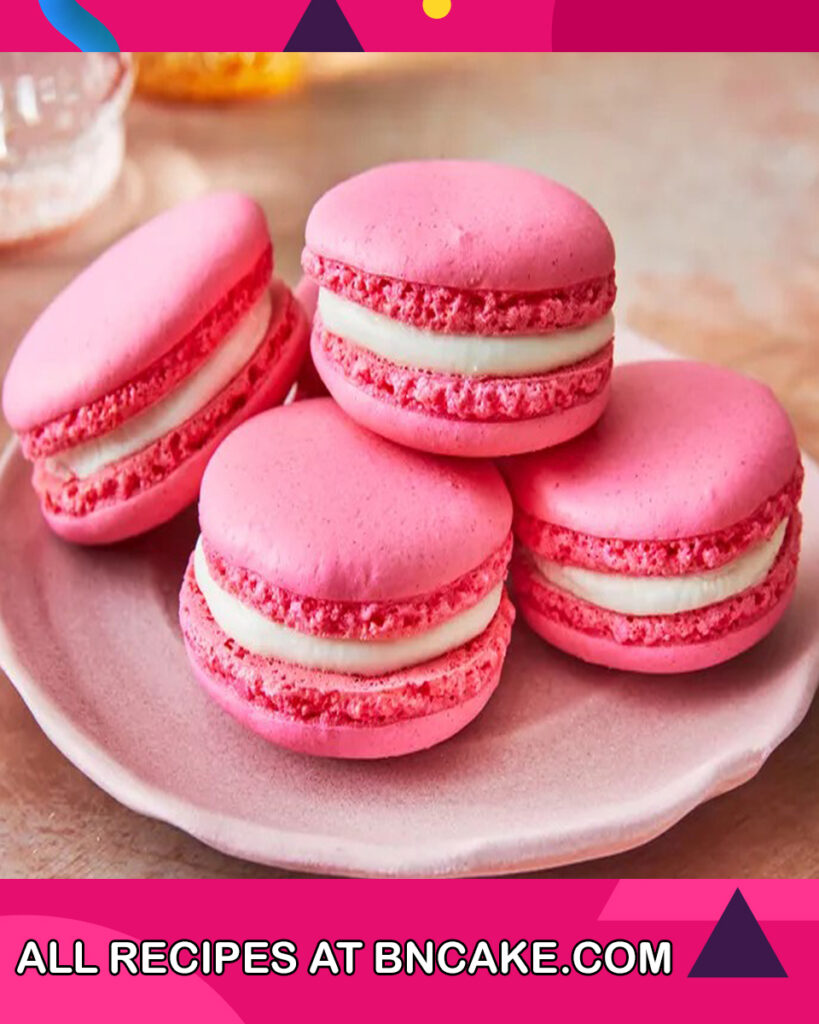
Other Delicious Dessert Recipes To Try
FAQs And Troubleshooting
FAQs about French Macarons:
- What is the difference between a macaron and a macaroon?
A common misconception is confusing macarons with macaroons. French Macarons are delicate, almond-based sandwich cookies with a smooth outer shell and a soft interior, while macaroons are coconut-based cookies, often chewy and dense in texture. - Are French Macarons gluten-free?
Yes, French Macarons are naturally gluten-free as they are primarily made with almond flour instead of wheat flour. However, it’s essential to verify that all ingredients used, including flavorings and fillings, are gluten-free. - Can I make French Macarons without aged egg whites?
While using aged egg whites is recommended for stability, you can still make French Macarons with fresh egg whites. To improve results, you can separate the egg whites from the yolks a day before making the macarons and keep them in a covered container in the refrigerator overnight. - Why do my macarons have hollow shells?
Hollow shells in macarons are often caused by overbeating the egg whites or undermixing the macaronage. Make sure to achieve the right consistency during macaronage to prevent hollow shells. - Why are my macarons cracking or not forming “feet”?
Cracked or footless macarons can result from undermixing the batter, improper resting time, or oven temperature fluctuations. Proper macaronage and resting, along with precise oven temperature control, can help avoid these issues. - Can I freeze macaron shells before filling them?
Yes, you can freeze unfilled macaron shells for later use. Place them in an airtight container with parchment paper or silicone sheets between layers. Thaw them at room temperature before adding the fillings. - How long do filled macarons last?
Filled macarons are best enjoyed within 3-4 days of filling. Refrigerate them in an airtight container to maintain freshness.
Troubleshooting Common Issues:
- Macarons spread too much during baking:
This can happen due to overmixing the batter or using excessive liquid food coloring. Be mindful of the consistency during macaronage and use gel or powdered food coloring. - Macarons have uneven shapes:
Uneven shapes may result from inconsistent piping or air bubbles in the batter. Use a template for piping circles, and tap the baking sheets to release air bubbles before resting. - Macarons stick to the baking paper:
Allow macarons to cool completely before attempting to remove them from the baking paper. If they still stick, gently slide a spatula under each macaron to lift them off. - Macarons are too dry or too soft:
Achieving the right texture depends on proper measurement and macaronage. Ensure accurate ingredient quantities and gently fold the batter until it reaches a lava-like consistency. - Macarons are too chewy or rubbery:
Overbaking macarons can result in a chewy or rubbery texture. Monitor baking time carefully and adjust as needed based on your oven.
Remember, making perfect French Macarons takes practice, so don’t be discouraged by initial challenges. Experiment, learn from each batch, and enjoy the delightful journey of mastering this elegant French pastry.
Nutrition Information
Below is a general estimate of the nutritional values for one standard-sized French Macaron (approximately 2 inches in diameter) without any filling:
Calories: 70-100 kcal, Total Fat: 4-6 grams, Saturated Fat: 1-2 grams, Trans Fat: 0 grams, Cholesterol: 0-5 milligrams, Sodium: 10-20 milligrams, Total Carbohydrates: 8-10 grams, Dietary Fiber: 0-1 grams, Sugars: 7-9 grams, Protein: 1-2 grams
Please note that these values are approximate and can vary based on the specific ingredients and quantities used in the recipe. Additionally, once filled with ganache, buttercream, or other fillings, the macaron’s nutritional content will change accordingly.
When consuming French Macarons, it’s essential to enjoy them in moderation as they are a sweet and calorie-dense treat. If you have specific dietary concerns or health considerations, it’s best to consult a nutritionist or healthcare professional for personalized advice.


